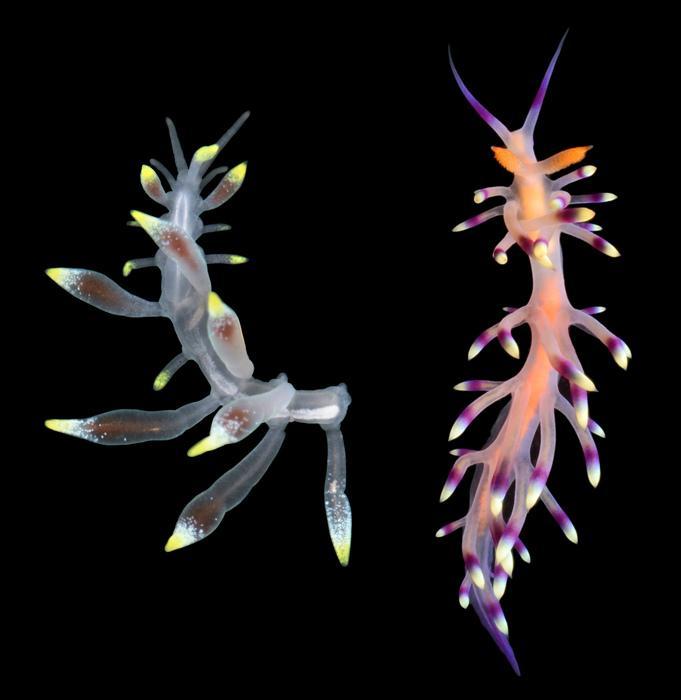
As in previous years, the World Register of Marine Species (WoRMS) has released its annual list of the ten most interesting marine species described by researchers in the past year. This top ten list is just a small selection of the 3,200 marine species described in 2024. All of the selected species encompass the weird, the mind-boggling, and the wonderful! Among these species are a mysterious clam, an anglerfish, and a polychaete worm that mimics a nudibranch. One of these amazing species was described by an international team of authors, including a member of our institute.
Imitation is often considered the sincerest form of flattery... or, in the marine environment, the best way to get a free lunch. The newly described polychaete Cryptochaetosyllis imitatio Jimi, Britayev et Martin 2024 lives on soft corals in tropical reefs of the Western Pacific. The body of this unusual worm is brightly colored, contains few segments, has only a few simple setae, and large spindle-shaped dorsal antennae. Its closest known relatives have many more segments, short dorsal antennae, and parapodia with many jointed setae.
The highly modified appearance of Cryptochaetosyllis imitatio offers two intriguing possibilities. The color patterns and body shape provide camouflage on the surface of branching soft corals, allowing it to hide from predators. However, the narrow body of this worm, its sparse but long processes, and bright coloration strongly resemble the morphology of nudibranchs, whose diet of coral tissue and ability to incorporate their stinging capsules into their body provide reliable protection from predators.
Link to the full WORMS press release: https://marinespecies.org/worms-top-ten/2024/press-release
Link to the publication: https://www.nature.com/articles/s41598-024-66465-4
